6 Racing Driver Tips to help with everyday driving
It is no secret that the developments made in the world of motorsports are progressively integrated by car manufacturers and applied to road cars. But what about the driver? Can we apply some of the techniques used by racing drivers to become better drivers? At the Wyant Group, we think so. Without waiting, here are six race driver tips to help with everyday driving.
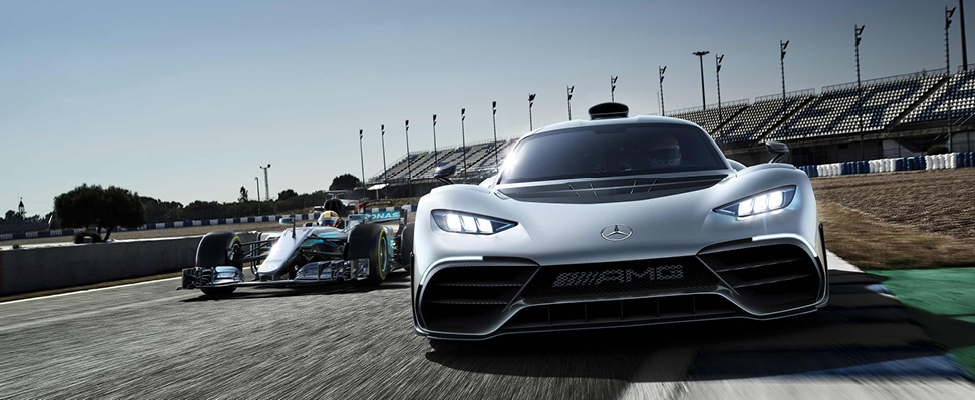
Image: Mercedes-Benz
Be aware of your surroundings
For racing drivers, the start of a race is often the best opportunity to make up position, as all the cars are bunched up in a tight space. In this situation, the very best drivers are the ones who are able to map out an accurate representation of what vehicles are around them and what is likely to occur.
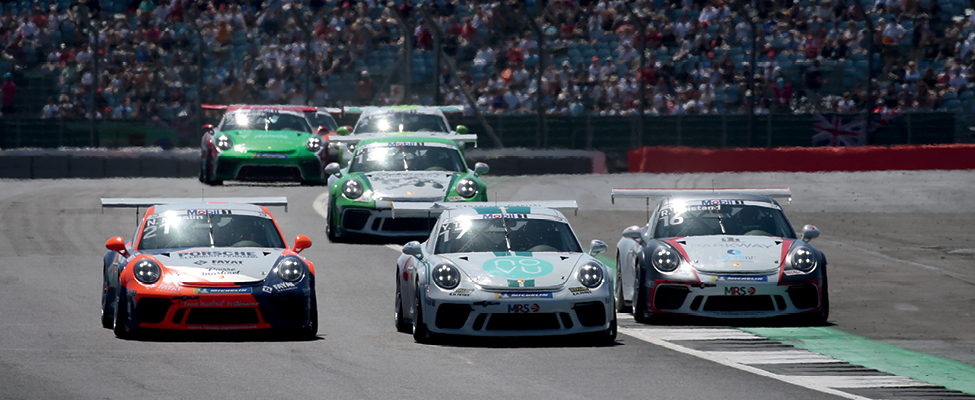
Image: Porsche
Does the track narrow? Is another vehicle about to go into my lane? Do I have room to make a maneuver if the vehicle in front brakes suddenly?
The very best racing drivers can assemble this information and make it count to consistently advance in the first few laps of a race.

Image: Volvo Cars
While public roads are certainly not racetracks, keeping this mental map of your surroundings is an effective way to keep yourself out of trouble. By ensuring that you always have a way to go to avoid any sudden movement from other vehicles, pedestrians or wildlife, you’ll be putting in practice an essential driving skill.
Lift and coast
It may seem hard to believe, but racing cars are often under-fueled before the start of a race. If driven flat-out, they would run out of fuel before reaching the finish line! Racing teams do this as fuel is heavy; using less fuel means better acceleration, braking and cornering speeds, as well as less tire wear. Thus, drivers occasionally “lift and coast” just before a braking zone to save fuel and ensure they finish the race.
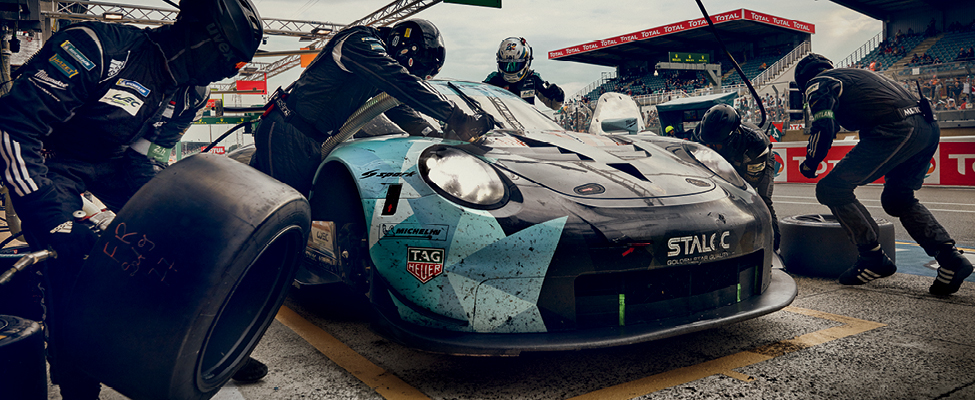
Image: Porsche
As a driver, you can save a great amount of fuel and minimize wear on your brake pads by lifting and coasting the next time you take an off-ramp, prepare to take a tight corner, or approach a red light. And, should the light turn green before you get there, you’ll already have built up some useful momentum, meaning you won’t have to burn fuel to re-accelerate.
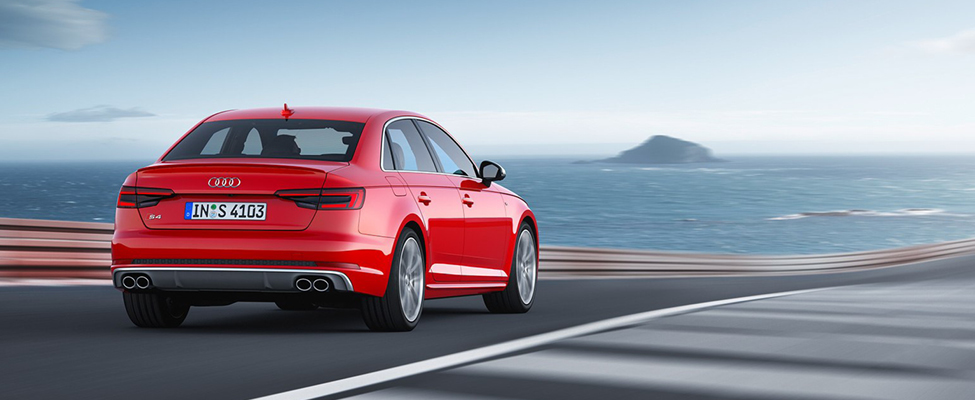
Image: Audi Canada
Slow in, fast out
A key to a fast lap time on the race track is to follow the rule of “slow in, fast out.” Racing drivers get most of their braking done in a straight line as they approach the corner, as that is where the vehicle is most stable and the tires provide maximum braking grip. By ensuring a gentle transition between braking and throttle as they enter and exit the corner, racing drivers can keep the vehicle stable while the tires’ grip is almost exclusively used to turn. Going “slow in, fast out” also allows racing drivers to be early on the throttle before hitting the next straight, so they will reach top speed faster.
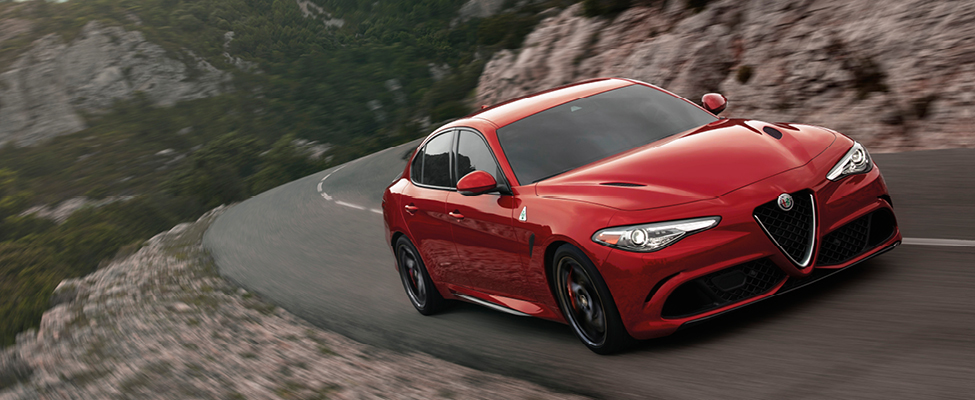
Image: Alfa Romeo
This technique also happens to be the best way to drive your vehicle. Of course, you won’t be accelerating to top speed after a corner, but by going slow in and faster out, you’ll ensure that you have slowed down enough for any turn and that your car is stable as you take the corner and exit on the next straight. This is particularly important in adverse driving conditions, where grip levels are often unpredictable.
Look where you want to go
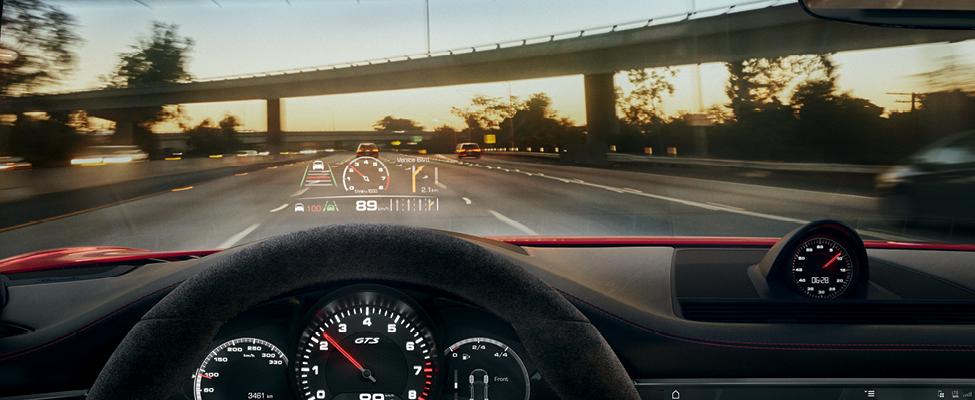
Image: Porsche
Instead of looking at just the car in front, racing drivers look far ahead. Because their eyes are focused on a consistent target up ahead, this results in smoother steering inputs and also ensures that they can respond to any loss of control almost seamlessly. This is because the hands tend to naturally steer in the direction where you are looking. Focusing on the road far ahead also helps race drivers to plan ahead for an overtake or account for a potential danger up the road – a crucial skill when racing at high speeds.
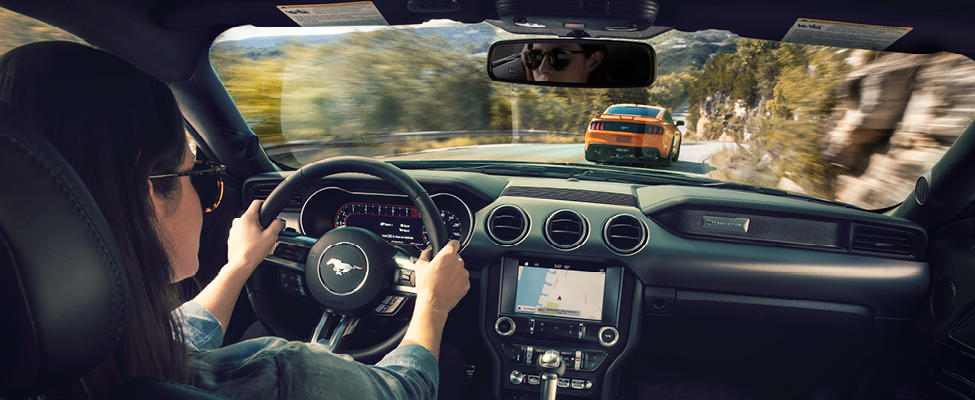
Image: Ford Canada
In this case, there is a direct translation to everyday driving skills, as looking far ahead will help you discern any situation ahead where you may need to slow down or change lanes, and it will naturally help you keep better control of your vehicle. Remember: if you start sliding, look where you want to go and steer there.
Find the grip on the road
Being a racecar driver is all about maximizing the available grip while remaining in control. That’s why they always ensure that they don’t put two wheels on the grass or dirt as they try to brake or accelerate. That sounds pretty obvious, doesn’t it?
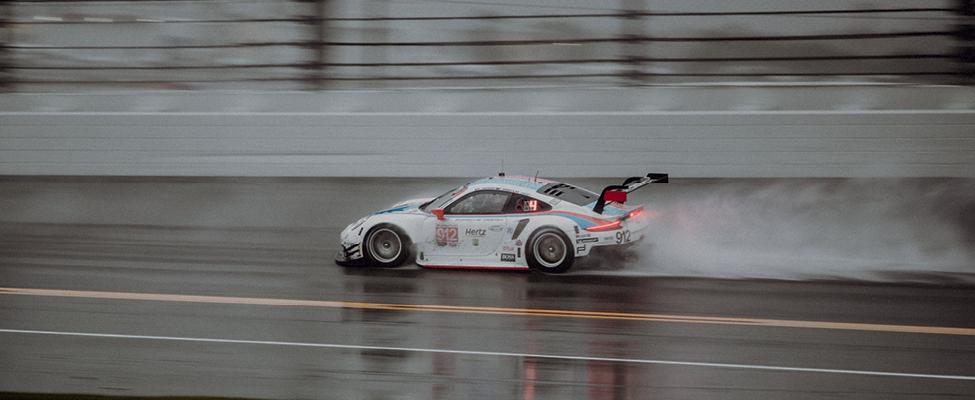
Image: Porsche
This applies directly to driving on the road. If a road has icy patches or more snow, slush or water on one side than the other, always keep in mind that your vehicle may be unsettled. In days past, braking or accelerating with one side of the vehicle on a slippery surface almost inevitably resulted in a spin. Nowadays, advanced technologies such as traction control and stability control can help you respond to almost all situations to ensure that your vehicle safely keeps pointing in the right direction.
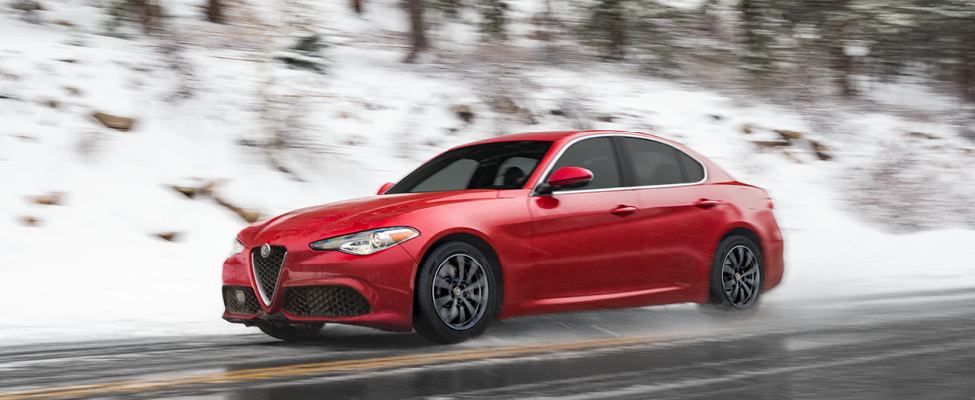
Image: Alfa Romeo
However, the laws of physics still exist. Think of it this way: a chain is only as strong as its weakest link, and in this case, the weakest links are the wheels with no traction. The solution? Within reason, try to position your vehicle on the road as to always be on a grippy surface. If you ever find yourself in a situation where one side of your vehicle is driving on a slippery surface, remain aware that your vehicle may want to slide, and that your braking, acceleration and cornering performance will be limited by the wheels with the least traction.
Driving comes first – the rest can wait
Race drivers are often assigned a race engineer. Their relationship is extremely important: engineers relay crucial information about the condition of the car and the race strategy. Importantly, just like a coach, a driver’s engineer ensures that the driver keeps their focus on extracting the most performance out of the car rather than being distracted with strategy or emotions of the race.
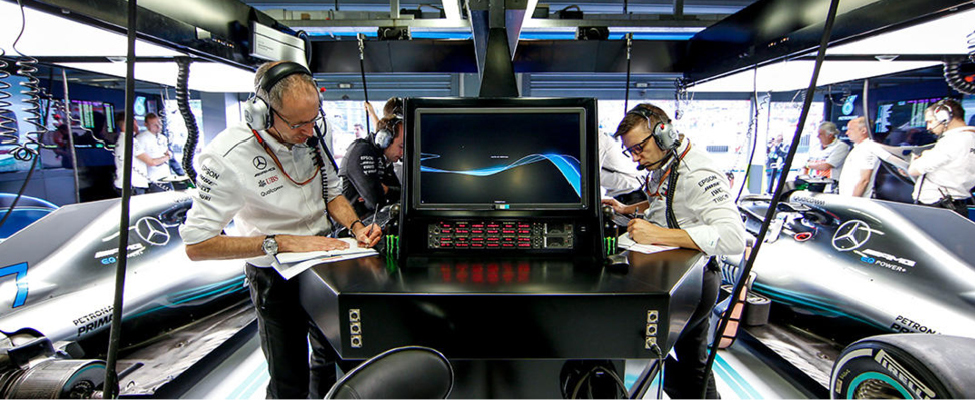
Image: Mercedes AMG Petronas Motorsport
When it comes to minimizing distractions and focusing on the road, the task we face on our daily commute is arguably even more challenging. Instead of having to drive fast, we must pay attention to pedestrians, stop signs and school zones – none of which are found on racetracks. And of course, we all want to stay up to date on our texts and emails, and often have to make the odd phone call.* Despite all this, we do not get a race engineer to assist us with everyday driving.
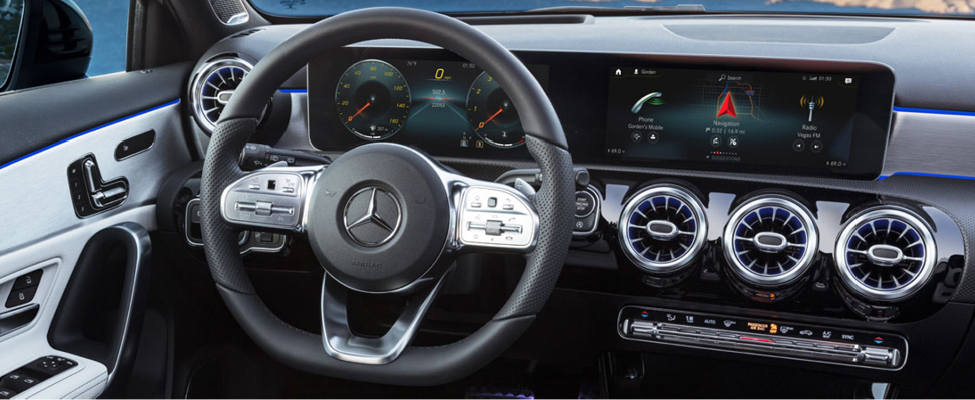
Image: Mercedes-Benz
Thankfully, manufacturers are progressively introducing advanced infotainment systems and smart apps to allow us to manage everything from navigation to communication without having to resort to a hand-held device. But despite all this help, we must keep in mind the bigger picture: just like a racing driver, our most important task is to drive safely and attentively. This is true whether your passenger is looking for loose change or whether you’re wanting to return a call – at the end of the day, driving safely supersedes all other tasks. Pilots refer to this as “Aviate, Navigate, Communicate”, and it’s a good motto to live by.
Setup your vehicle
Overall, it’s safe to say that despite the differences between racing on a track and driving on a public road, most of the fundamental racing skills translate directly to help us become better drivers. Likewise, it’s important to remember that a winning combination requires a great driver and a great car.
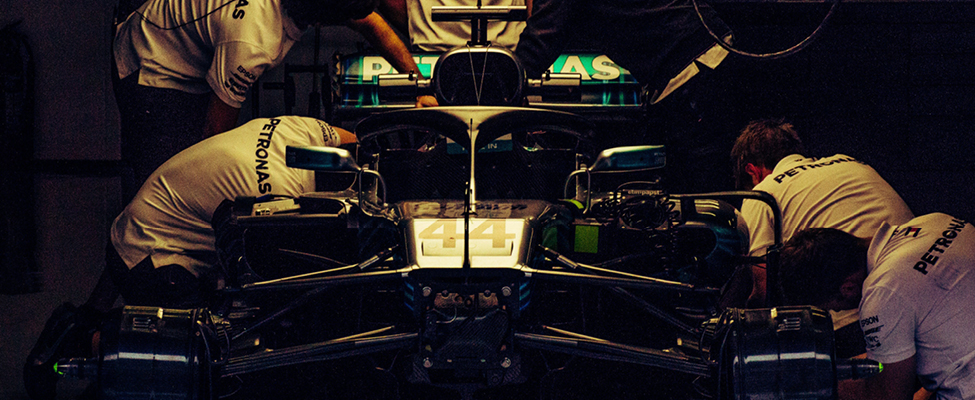
At the Wyant Group, we’re proud to represent brands that offer outstanding performance along with the latest technology and safety features. The service team at our dealerships can help you set up your vehicle for the conditions, for instance by fitting manufacturer-approved winter tires or installing an engine block heater. Our experienced technicians are there to ensure your vehicle is ready to take on the road, and that you have the right equipment to maximize your advanced driving skills. From all of us at the Wyant Group, safe travels out there!
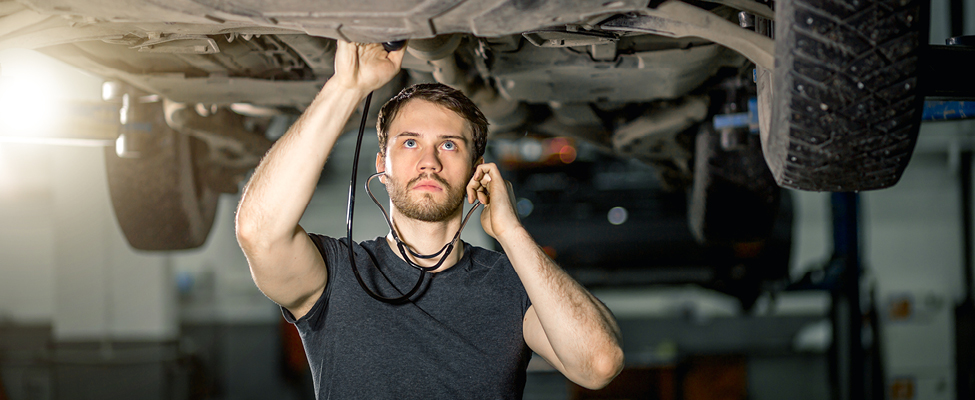
*Always act safely, responsibly and according to laws and regulations when using communications behind the wheel.





